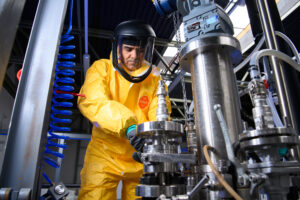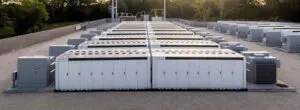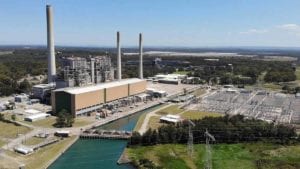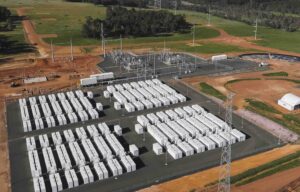Australia’s biggest supplier of coal generation and baseload power, AGL Energy, has again underlined the fact there is no room for nuclear in Australia’s transition to renewables – neither on a grid dominated by wind and solar nor at its coal sites that it intends to transform into clean industrial hubs.
“I’d like to clarify – as I did in March – that nuclear energy is not part of our strategy and our position on this remains unchanged, AGL CEO Damien Nicks said in a presentation to a CEDA event in Sydney on Tuesday.
Nicks’ position is important because two of AGL’s coal generation sites have been identified by the federal Opposition for its nuclear power plans, which it says could see seven reactors, or more, start construction sometime in the 2030s or 2040s – should they be elected, be able to remove the bans, find the technology and finance, and the sites to host it.
AGL – and the owners of other mooted nuclear sites – have no intention of giving up their assets for nuclear power plants, despite the threats of compulsory acquisition, largely because they have their own plans.
Nicks says the site of the recently shuttered Liddell coal generator in the Hunter Valley is already accounted for, with plans for a giant battery, solar module manufacturing, panel recycling, a link to a planned 400 MW pumped hydro facility and multiple green industries including hydrogen, metals and other activities.

“The Hunter Hub is actively progressing opportunities across a variety of industries, including; solar thermal generation, solar PV manufacturing, battery and solar recycling, waste-ash-to-materials and hydrogen,” Nicks says.
“Our recent announcements with SunDrive and Elecsome are examples of the businesses we’re looking to work with.
“We’re committed to creating opportunities for our people and local communities, as well as partnering with like-minded industries to support economic diversification and jobs in the Upper Hunter.”
The point that Nicks made around the Hunter hub is that – because of its multi-billion dollar investment plans in new industries – there is no spare capacity for the sort of big nuclear projects that the Coalition wants to build. Or even small ones.
It points to the hot air behind the Opposition position on nuclear, and it’s complete of planning and consultation, something it plans to ignore by riding roughshod over opposition from state governments, asset owners, and local communities.
But the nuclear plan also makes little sense for Australia’s solar dominated grid, as so many energy experts have pointed out. Nicks once again highlighted this, saying the nature of a grid dominated by wind and solar needs flexibility rather than the “always-on” base-load design relied on by nuclear.
AGL intends to shutter the last of its coal generators by 2035, and is working to make them more flexible in the meantime so they can to respond to the generation patterns and “solar duck curves” created by rooftop PV, which will account for most of demand in daytime hours, and large scale wind and solar.
“It’s critical we have the flexibility within our portfolio to firm capacity and help us manage some of the changing peaks and troughs in the renewable energy market,” he said.

These include expanding its grid scale battery assets, boosting its capacity of hydro and gas peakers, and growing its portfolio of distributed energy assets to 1.6 GW by 2027, to support load shifting and orchestration of rooftop solar.
The slide provided above indicates a number of new wind, solar and battery projects, including the already announced Pottinger Energy Park in the Riverina, the proposed 500 MW, 2000 MWh Tomago battery, the newly approved Bowmans Creek wind project, and several other projects that have not yet been publicly named.
“We’ve undertaken significant upgrade works at our Bayswater plant in NSW and Loy Yang in Victoria that means these plants can now be flexed down approximately 60-70 per cent of their full operating capacity.
“This means we’re able to further ramp down during those daytime periods of peak solar generation which is commercially beneficial as it minimises production at negative pricing, using less coal and producing less emissions,” he said.
Nicks also made a push for hydro, saying that its ability to provide long duration storage and synchronous generation would make it a valuable asset in a grid dominated by wind and solar.
But he said it would require the right market settings, and policy stability – something that is not evident in the federal Coalition’s plans to slow down or even stop investment in renewables and ignore medium term emissions reduction targets agreed as part of the Paris climate treaty.
“Our industry is currently undergoing the most significant transformation in 50 years,” Nicks said.
“AGL’s generation portfolio will look completely different by 2035, when we’re no longer generating electricity from coal.
“To ensure we achieve our net-zero targets and manage the transition responsibly, we will continue to stay focused on our strategy, including the development of our renewables and firming pipeline, and the transformation of our retail business recognising the role the customer will play, now and into the future.”










